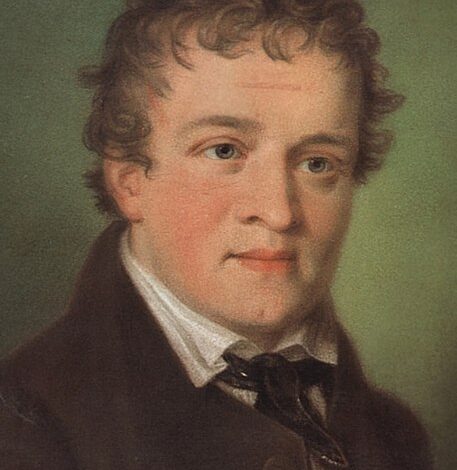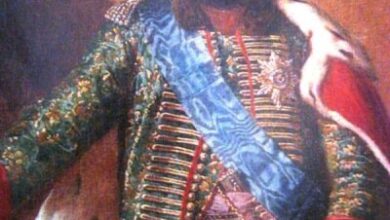
The Strange and Bizarre Story of Kaspar Hauser: A Boy with No Past
The story of Kaspar Hauser is as strange as it is tragic. The odd-looking teenager appeared wandering the streets of Bavaria, Germany on May 26th 1826, with a note in his pocket.
His boots were so old and worn you could see his feet sticking through them. He wore pantaloons, a grey jacket and a waistcoat with a silk necktie. He was also carrying a handkerchief with embroidered initials ‘KH’.
A local shoemaker, Georg Weickmann, approached the odd boy, but all he would say was “I want to be a rider, like my father”. The boy gave him a note addressed to a cavalry captain, Captain von Wessenig. It requested that the captain either take him in or hang him. The choice was his.
The shoemaker took him to the captain. Upon reading the notes he questioned Hauser. Hauser repeated he was willing to serve the cavalry but when questioned further he answered ‘don’t know’, ‘horse’ or ‘take me home’.
So, who was this teenager? Where had he come from and who were his parents? And why was he being turned out onto the streets now? As the authorities delved into the history of this strange boy, they uncovered more questions than answers.

The story of Kaspar Hauser begins
Kaspar Hauser was first seen in Nuremberg in 1826, wandering the streets. After the shoemaker had taken him to the captain, he was taken to the authorities for questioning. They discovered he had two notes with him. The first was anonymous and was sent to the captain of the 4th squadron of the 6th cavalry regiment, Captain von Wessenig:
‘From the Bavarian border/ the unnamed place/1828’
The author described how he took custody of the infant Hauser on October 7th, 1812, raising him as if he was his son. He never spoke about the boy’s parents, only stating that if he had parents:
“…he would have been a learned man.”
He asked that the boy became a cavalryman like his father. He also said he had taught the boy to read and write and that he was educated in the Christian religion.
So far, so good. But then things got weird. The note went on to say that the boy had not taken:
“a step from the house, in order that nobody might know where he was brought up.”
The note ended with the author explaining why Hauser was found alone, wandering the streets of Nuremberg: “it would cost me my neck” had he escorted Hauser there himself.
Where had Kaspar Hauser come from?
Authorities read the second note, hoping for answers. They deduced this note was from Hauser’s mother.
The second note said the boy’s name was Kaspar, born on April 30th, 1812. His late father was a dead cavalryman of the 6th regiment. After looking closely at both letters, the police concluded that the notes were written by the same person. Perhaps even Hauser himself?
However, although Hauser was 16 years old, he could only write his name. For a teenager, he behaved very oddly. He was fascinated by a lit candle and tried to touch the flame several times. Likewise, when he saw his reflection in a mirror, he tried to grab his face.
He acted childlike, walked like a toddler and had no manners or social graces. He would not talk in sentences, rather he would copy words and phrases he heard. His vocabulary was extremely limited, although he knew several words for horses.
Hauser refused all food except for bread and water. He would not reveal the identity of the person who had kept him locked up all his life. But he did reveal that when released, he was told to look at the ground and walk.
What to do with Kaspar Hauser?
Now the authorities had a problem on their hands; what should they do with this childlike teenager? It was clear he could not cope on his own. Eventually, authorities decided to put Hauser in the local jail; Luginsland Tower in Nuremberg Castle.
He was placed under the supervision of a jailer called Andreas Hiltel who took pity on him. The jailer started bringing his children along to see Hauser. Hiltel’s children taught Hauser how to read and write. Hiltel began to notice Hauser’s idiosyncrasies, for example, he liked being in the dark, he could sleep sitting up and had no idea of the differences between men and women.
After 2 months, it was obvious that jail was not the answer to Hauser’s situation. In July 1828, Hauser was released from jail into the custody of psychologist and university professor George Friedrich Daumer and under the protection of Lord Stanhope, a British nobleman. The professor taught Kaspar Hauser how to read and write and they began to converse. Daumer discovered that Hauser possessed unusual talents.
For a start, he was an excellent sketch artist. He had particularly heightened senses, especially when he was in the dark. Hauser could not only read in the dark but identify who was in a darkened room just from their smell.

By all accounts, Hauser was a quick learner with an excellent memory. In early 1829, he completed his autobiography. It revealed his terrible childhood. He was locked in a cell, 4ft wide, 7ft long and 5ft high with only straw to sleep on, by a man he had never seen. He was only given bread and water. He had a few wooden toys to play with.
Sometimes, when he drank the water, it tasted different. On these occasions, he would awake from a deep slumber to find he was clean and wearing fresh clothes.
Hauser was taught a little reading and writing by his anonymous jailer but was instructed to learn a few phrases, which he would repeat when released.
Now he was free from his prison and living with a well-meaning mentor, surely life could only get better for Hauser? Unfortunately, the opposite is true.
Attempts on Hauser’s life
Kaspar Hauser was a creature of habit, so on October 17th, 1829, when he didn’t return to Daumer’s house for lunch, it was a cause for concern. He was found in Daumer’s cellar with a gash to his forehead. He claimed that a man attacked him with a razor. He said the man uttered the words: “You still have to die ere you leave the city of Nuremberg,” and that he recognised the man’s voice as his anonymous jailer from childhood.
Around 6 months later, on April 3rd, 1830, Daumer heard a gunshot coming from Hauser’s room. He rushed to his aid but found his young charge bleeding from a small cut to his head.
By this time, rumours were spreading about Hauser. People started calling him a liar or seeking sympathy from the locals.
Hauser left Daumer’s residence in December 1831 and went to live with a schoolmaster called Johann Georg Meyer in Ansbach. Meyer did not like Hauser as he believed the teenager was a liar. By 1833, Hauser was working as a clerk and appeared happy. However, this was not to last.
At night on December 14th, 1833, Hauser was attacked, suffering a deep wound to his chest. He managed to stagger to the house of Lord Stanhope, but unfortunately died three days later. Before he died, he told Lord Stanhope that a stranger had approached him and given him a velvet pouch which contained a note, and then he was stabbed.
Police examined the note. It was written backwards, known in German as ‘Spiegelschrift’, so you could only read it in a mirror.

The note was originally in German but has been translated as:
“Hauser will be able to tell you quite precisely how I look and from where I am. To save Hauser the effort, I want to tell you myself from where I come _ _ . I come from from _ _ _ the Bavarian border _ _ On the river _ _ _ _ _ I will even tell you the name: M. L. Ö.”
Hauser was buried in Ansbach. As his birthdate is unknown, his headstone reads:
“Here lies Kaspar Hauser, riddle of his time. His birth was unknown, his death mysterious. 1833.”

The mystery of Kaspar Hauser’s identity
Who was Kaspar Hauser? Rumours began circulating long before he died. One suggested that he was the son of Charles, Grand Duke of Baden, and Stéphanie de Beauharnais. This meant he was a prince of Baden but had been stolen to protect the lineage of the royal house.
Others believed he was simply a fantasist who had grown bored of his life and made up stories to make his life more interesting.
DNA eventually ruled out any direct link between Hauser and the Baden family, but could not exclude a connection either.
Final thoughts
The story of Kaspar Hauser is so bizarre that it has remained in our consciousness for over 200 years. No one will ever truly know where he came from or who he was. Perhaps that’s why the mystery has endured for so long.
References:
**Main Image: Carl Kreul, Public domain, via Wikimedia Commons**




